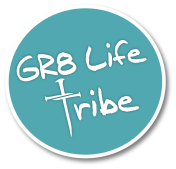MODULE 4
Connect with Your Emotions
Connecting with yourself means connecting with your emotions. This is what introspection is all about: turning inward and observing what’s going on inside yourself without judgment.
The relationship you have with yourself is the most important relationship you’ll ever have, and emotional health lies at the heart of this relationship. Emotional exploration isn’t easy, but it can form the foundation for a self-relationship that will support you in all other areas of whole-person health. Approaching your emotions with acceptance and compassion, checking in with them regularly, and creating space for emotional rest are core components of having a healthy relationship with yourself.
Approach Emotions with Acceptance and Compassion
Nurturing your relationship with yourself requires practicing acceptance and compassion. It requires being curious, without judgment, about what’s really going on for you and taking an honest look at your current needs and desires. Don't be afraid to ask tough questions or sit with uncomfortable feelings as you uncover layers of yourself. Strengthening the connection you have with yourself is a surprisingly effective way to move toward where you want to be.
Check In with Emotions
Another part of connecting with yourself is checking in regularly with your emotions. If you’re not sure how to do this, think about how you would check in with a friend. Maybe you call, maybe you send a text, or maybe you sit down and have a chat.
When you check in with yourself, you’re essentially communicating with yourself as if you’re another person. You’re stepping outside yourself in order to gain new perspectives on what’s going on with you internally.
Select a tip for checking in with yourself to learn more. These are just a few ideas, and they might spark more ideas. Tap into your creativity to find what works for you.
Create Space for Emotional Rest
As you learned in the previous modules, it’s important to honor your ultradian rhythms by balancing work with regular rest breaks and engage in regular self-care to help balance continual stress by stimulating the parasympathetic nervous system. In this module, we’ve expanded on the importance of balancing high-energy periods with rest by highlighting valuable strategies for connecting with your emotions. Another key component of emotional rest is sleep as it’s essential for emotional processing(this link opens in a new window/tab) in the brain.
